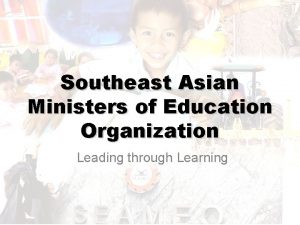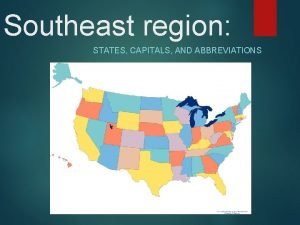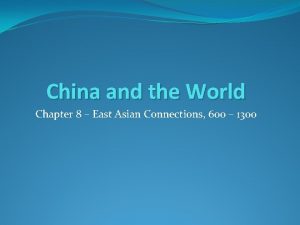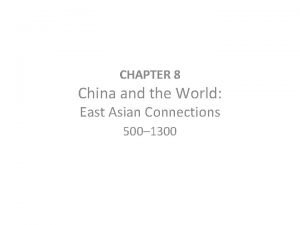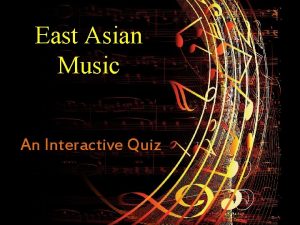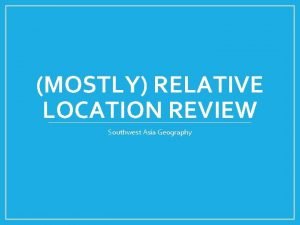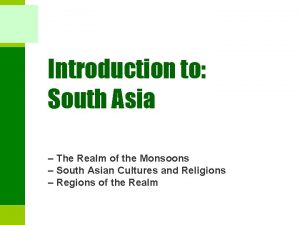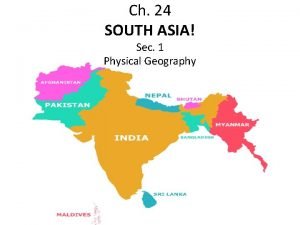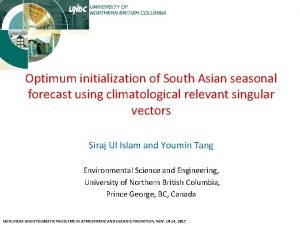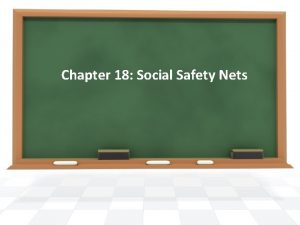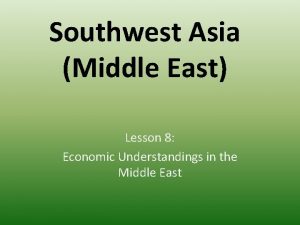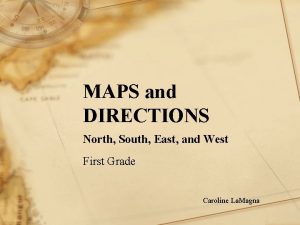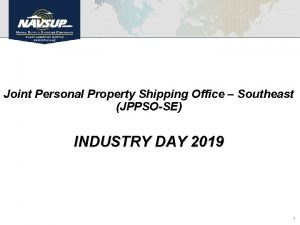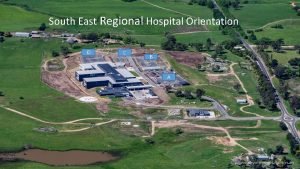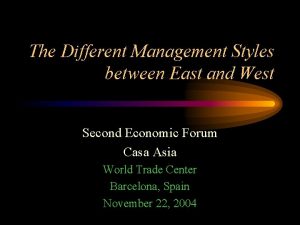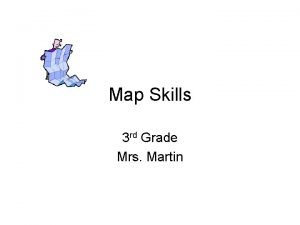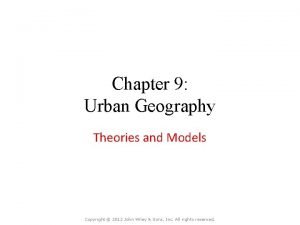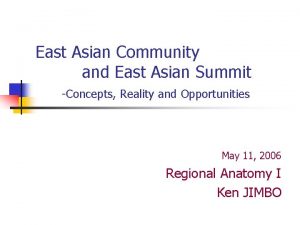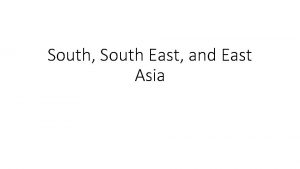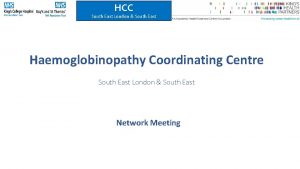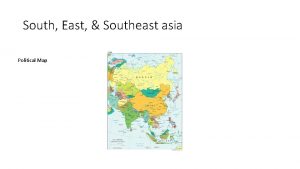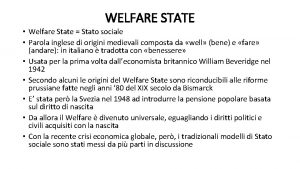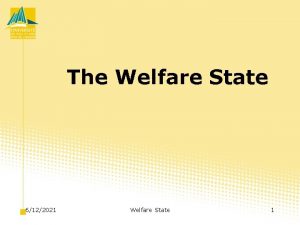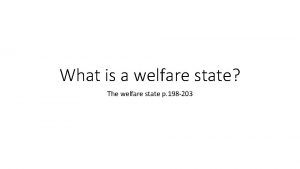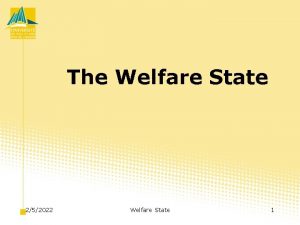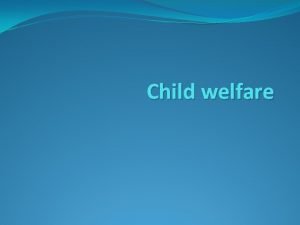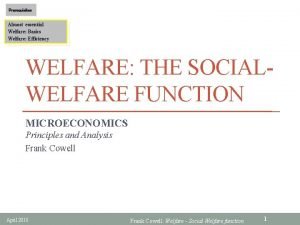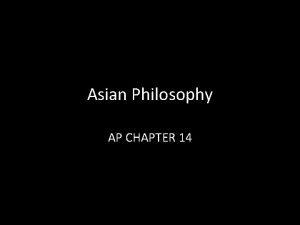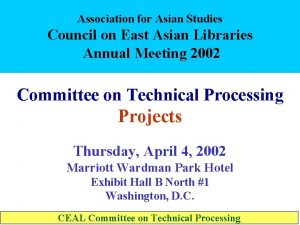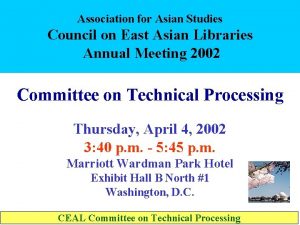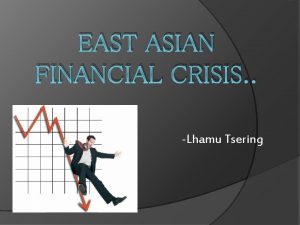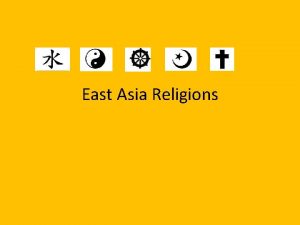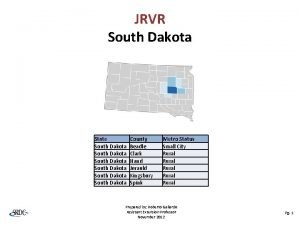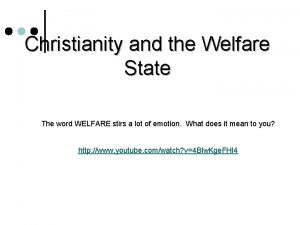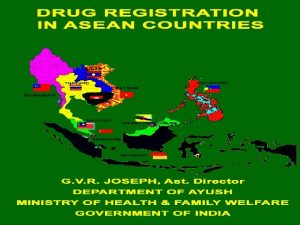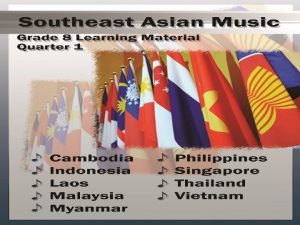An Asian Welfare State Model East and South
































- Slides: 32

An Asian Welfare State Model? East and South Asian trajectories and approaches Gabriele Köhler Development economist Conference on Re-Thinking Asia II “Building New Welfare States: What Asia and Europe can learn from each other” Protestant Academy Tutzing 28 -29 October 2013

I. ) Premises of the discussion • Growing social inequalities in Asia and Europe – Despite commonly accepted fundamental values and ideals • Need for a progressive counter-narrative to – – Tackle social inequalities Make social justice available to all Reduce income inequality and unequal opportunities What role do comprehensive social security systems play • Hence: revisit the welfare state Source: FES invitation

II. ) Preliminaries socio-economic trends

Vulnerability, poverty, informality

ca Br a M zil al a Ar ysia ge nt in a Un Ch Ru ss ited ina ia n Sta Fe t de es ra Ph tio ilip n pi ne Ni s g Sin eria ga po Th re ai la Sr nd i L an ka Ja pa n In In dia do ne si Gr a Ba ee ng ce la de sh Un ite Can d ad Ki n a So gdo ut h m Ko Lit rea h Sw uan itz ia er la n Fin d la Au nd st r Ge alia rm an No y rw a Au y s De tria nm a Sw rk ed en fri th A So u 23. 0 24. 0 25. 6 34. 0 33. 4 30. 9 31. 6 32. 0 30. 3 27. 0 36. 8 34. 3 32. 4 29. 3 30. 0 37. 6 40. 0 48. 3 44. 5 45. 1 46. 4 46. 9 42. 0 42. 5 43. 7 40. 2 50. 0 49. 2 60. 0 56. 4 63. 6 High income inequalities Gini coefficient 70. 0 20. 0 10. 0

Asia-Pacific: people deprived Source: Asia-Pacific Regional MDG report 2011/12 (ESCAP/ADB/UNDP)

III. Welfare state trajectories

Welfare state definitions Two -three – four – five pillars 1. Education 2. Health access 3. Social security and social assistance 4. Active labour market policies 5. Family policy - welfare services

A welfare state model Social Insurance, including health insurance Social assistance Pillar I: Education Pillar III: Social security Labour market policies Forms of micro credit, micro insurance, area-based schemes Child protection services/tra nsfers Pillar II: Health 9

Welfare state politics • • • • Nation building Demographic factors Economic progress Productivity enhancement Economic compensation – anti-poverty Enhancing the domestic market Political co-optation of subordinated classes by elites Guilt or security concerns of the elites Political stability Political pressure from trade union movements or “grassroots” Socio-cultural values and changing welfare provision arrangements Norms Peer competition Copycatting …. Social policy as a process driven by power relations

The North: welfare state history • • • Germany Bismarckian reform: 1870 s US New Deal: 1930 s Japan interventionist welfare state: post WWII UK: Keynes and Beveridge 1950 s Northern, Central Europe, Southern Europe welfare states: since 1950 s

The South: welfare state history • Latin America in 1910 -1920 s – Uruguay, Argentina, Chile, Brazil, Costa Rica • Sri Lanka 1930 s • South Asia – Constitutions of 1940 s/1950 s

The South: recent developments

IV. Four types of welfare states?

“Developmental welfare state I” Japan, Republic of Korea 1 st phase, Taiwan Po. C, Hong Kong SAR, Singapore, Malaysia • Social policy subordinate to economic development • Low government spending • Means tested, frequently conditional

“Developmental welfare state II” Korea: • New social contract after 1997 – democracy and response to Asian financial crisis • National Basic Livelihood Security Act 1999: – right to social assistance – universalised – guaranteed social minimum

Indonesia: recent social assistance programmes BLT Raskin Jamkesmas BSM PKH Program Unconditional Conditional Rice for the Health Scholarship Cash Transfer Cash Name Poor Protection for the Poor (2008 -09) Transfer Type Cash Transfer Health Subsidized service fees Rice waived Target Poor & near group poor HHs (HHs) Number of 17. 5 Mn 18. 2 Mn HHs beneficiari 18. 7 Mn HHs es Benefit level IDR 100, 000 per month Key Ministry of executing Social Affairs (Mo. SA) agency 15 kg rice per month Unlimited Bureau of Ministry of Logistics Health (Mo. H) (BULOG) Cash & Conditions Students from poor HHs Very poor HHs 8 Mn Students 1. 5 Mn HHs IDR 480, 000 1, 287, 000 per year Mo. NE & Mo. RA Mo. SA 17

Philippines: conditional cash transfer o To raise the average food o o expenditure of poor households To increase school enrollment and attendance To improve preventive health care for pregnant women and young children To reduce child labor To encourage parents to invest in their children’s (and their own) human capital: health and nutrition, education, and participation in community activities Selection Procedures of Target Households Geographical Targeting Household Assessment (Enumeration) Selection of Poor Beneficiaries using Proxy Means Test Eligibility Check 18

“Developmental welfare state II” China: • Disconnect between urban and rural coverage • Selective social contract: Minimum Subsistence Guarantee – for urban populations in 1999 – response to market reforms – extended to rural populations in 2008 – does not cover migrants • Rural cooperative medical insurance scheme – universalised 2013

“Developmental welfare regime III” South Asia: Bangladesh, India, Maldives, Nepal, Pakistan, Sri Lanka • Norms-based • Strong social inclusion angle • Mixture of means-tested and universal • Rights-based • Justiciable (notionally)

Social protection panorama South Asia Food-related measures • Cooked school meals (IND) • Subsidized PDS (IND, NPL, BGD) • Subsidized grain prices Social Assistance • Universal old age pension (NPL) • Benazir Income Support Program (PAK) • Child benefit (NPL) • Unorganized sector health insurance (IND) Public works • National Rural Employment Guarantee (IND) • Employment Generation Programme for the Poorest (BGD) • Karnali Programme; Employment Guarantee Act (NPL) • Employment generation for rural unskilled workers (PAK) Affirmative action • Secondary school stipend for girls (BGD) • Education for all (NPL) • Child grants for girls (IND) • Rural development and community based interventions (IND) Human rights • Right to food/National Food Security Act (IND) • Mid-day meal (IND) • Right to education (all) • Right to health services (all) • Right to work (IND) • Right to information (IND, BGD, NPL)

“Developmental welfare state IV” Dismantling: Europe 2005 onwards • Partial deterioration of entitlements • Means testing reintroduced • Conditionalities Examples: • Hartz IV in Germany • Child benefit in UK

V. Welfare expenditures

ka 3. 5 pi ne s Ne pa Ba l ng la de sh In do ne sia ilip Ph an i L 3. 6 Sr re po nd 3. 7 ga Sin ai la 4. 7 Th ay sia 5 al 5. 4 M am et n Vi in a 10 Ch ea or n pa Ja % of GDP 20 of K ic bl pu Re Total Social Protection Expenditure, as % of GDP 25 19. 2 15 7. 9 3. 2 2. 5 2. 1 1. 4 1. 2 0


V. Propositions

Proposition I Each country has a trajectory of a developmental welfare state, but its characteristics differ as a function of power politics – Some are purely instrumental for nation building, growth, social appeasement – Others are progressive, as outcome of pressure from formal sector trade unions, informal sector or rural cooperatives, women's movements, social or faith-based CSOs

Proposition II Common perception: welfare states were invented in Europe • In fact, types of welfare states existed in the South before the North – Latin America had welfare state elements in the 1910 s – Sri Lanka – “Zeitgeist” for welfare states: see post-war Europe, independent South Asia

Proposition III Convergence in Asia: • 1 st new wave: East Asia post 1998 economic crisis with new social policies • 2 nd new wave: rights-based or notionally universal welfare states South Asia, South Korea, Southeast Asia and China, since early 2000 s

Proposition IV Divergence South-North: • While “Asia” is moving towards nascent universalist developmental welfare states (at modest level of coverage and benefit levels) • Europe is moving towards a top-down welfare state (with remaining high coverage, but decreasing real entitlements, more conditionalities, and widespread public resentment)

Selected references Asian Development Bank, 2013. The Social Protection Index. Assessing Results for Asia and the Pacific. ADB Manila. Köhler, Gabriele and Deepta Chopra, eds. , 2014. Development and Welfare Policy in South Asia. London Mkandawire, Thandhika, ed. , 2005. Social policy in a development context. UNRISD. Geneva, London Pierson, Chris 2005. Late industrializers and the development of the welfare state, in Mkandawire, op. cit. Porsche-Ludwig, Markus 2013. Sozialpolitik in Asien. Ein Handbuch der Staaten Asiens von A-Z. Lit. Verlag Berlin: W Hopf Ringen, Stein and Kinglun Ngok, 2013. What Kind of Welfare State is Emerging in China? UNRISD working paper 2013. www. unrisd. org Ringen, Stein, Huck-ju Kwon et al, 2011. The Korean State and Social policy. Oxford: OUP UNRISD, 2010. Combating Poverty and Inequality. Structural Change, Social Policy and Politics. Geneva Wehr, I. , Leubolt, B. and Schaffar, W. 2012. ‘Welfare regimes in the Global South: A short introduction’, Austrian Journal of Development Studies, Welfare Regimes in the Global South, 28(1), pp. 6 -13.

Contact information Gabriele Köhler Website: www. gabrielekoehler. net Email: office@gabrielekoehler. net Development and Welfare Policy in South Asia Edited by Gabriele Koehler and Deepta Chopra Routledge, February 2014 http: //www. taylorandfrancis. com/catalogs/environment_and_s ustainability/1/2/
 Southeast asian ministers of education organization
Southeast asian ministers of education organization Wind is horizontal movement of air
Wind is horizontal movement of air The southeast region capitals
The southeast region capitals Chapter 8 china and the world east asian connections
Chapter 8 china and the world east asian connections Chapter 8 china and the world east asian connections
Chapter 8 china and the world east asian connections Mo li hua song classified
Mo li hua song classified Israel relative location
Israel relative location South asian realm
South asian realm South asia map physical features
South asia map physical features Asia seasonal forecast
Asia seasonal forecast Imaginary lines of the earth
Imaginary lines of the earth East is east and west is west
East is east and west is west Pros and cons of welfare state
Pros and cons of welfare state Lesson 8 middle east and south asia
Lesson 8 middle east and south asia Kalahari desert on africa map
Kalahari desert on africa map Orthopaedic surgery south east london
Orthopaedic surgery south east london World map north south east west
World map north south east west Jppso southeast
Jppso southeast Nifty fifty states
Nifty fifty states Fifty united states
Fifty united states North south east west leadership styles
North south east west leadership styles South east regional hospital
South east regional hospital Setfht
Setfht North east south west
North east south west South east strategic partnership for migration
South east strategic partnership for migration North, south east west leadership styles
North, south east west leadership styles Zenoss core demo
Zenoss core demo Map key
Map key North south east west globe
North south east west globe South east midlands lep
South east midlands lep South east london stp
South east london stp Old south vs new south streetcar named desire
Old south vs new south streetcar named desire Southeast asian city model definition ap human geography
Southeast asian city model definition ap human geography
